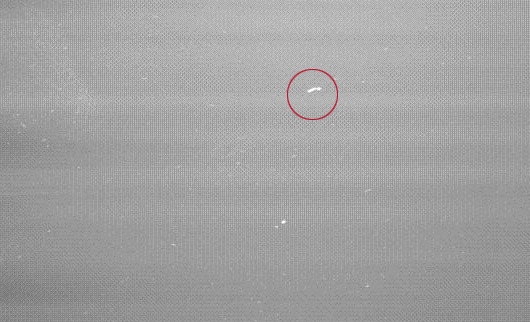Automatic surface defect inspection of metalic parts with 2D inspection methods often causes high false reject rates due to dirt, residues from cleaning liquids or oil and part color variations. 2D inspection methods process local brightnes differences in the image and thus can not reliably distinguish for instance dirt from pores. For safety reasons such a part will be rejected.
If the defective area in the image would be analysed by using 3D methods, considering also the depth variations, the defect can be reliably classified and only real defects will cause a part reject. Due to cycle time or resolution or cost reasons a 3D surface inspection of the complete part can not always be implemented.
In this case the combination of 2D and 3D inspection methods as offered by the surface defect inspection system CV-600 with the system software CV-Inspect may be a good choice. With 2D line scan camera technology offering resolutions of up to 12.000 pixels/line, the complete surface is processed for defects. Those defects which can be reliably classified with 2D methods are sorted out in this step already. Defects which can not be reliably classified in 2D are afterwords processed locally with 3D methods like “shape from shading” or “lasertriangulation” in a second step. Therefore only the defective areas are presented in front of the 3D sensor resulting in high resolution and fast 3D analysis and inspection. The 3D sensor resolution is up to 2.000x2.000 pixels, by analysing just small areas of the part, local resolutions of just a couple of microns may be obtained. Due to this combination of 2D and 3D inspection techniques, we can reliably distinguish dirt from defects like dents and pores and reduce the false reject rate.
Typical surface faults that can be detected on individual parts include dents, pores, chips, pits, discolouration, rust, scratches, grooves, grinding defects etc. Typical applications are surface defect inspection of sealing surfaces on engine blocks and cylinder heads, inspection of brake elements, seals, deap drawn parts for industries like automotive and automotive suppliers, metal processing.




